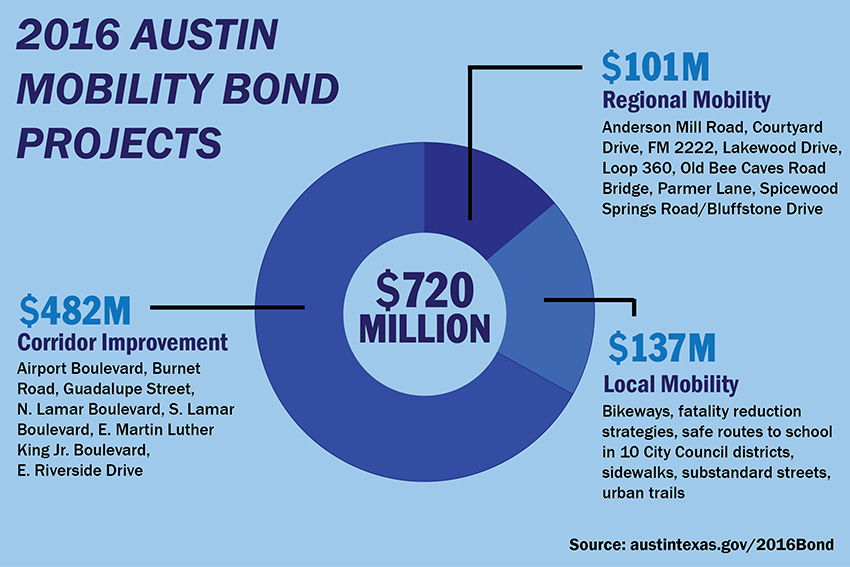Prop 1, the $720 million mobility bond (debt), is deficient and flawed. It will not deliver public expectations and diverts resources from accessibility and roadway safety.
Last June, Robert Goode, assistant city manager, sent a letter to Austin’s City Council about the bond. According to this letter, the projects identified in the bond will cost $1.5 billion; that is more than twice the proposed $720 million. In addition, among other potential cost increases, the city will need to increase the monthly Transportation User Fee (TUF) to pay for future roadway maintenance. How is the city planning to deliver $1.5 billion of transportation projects at half the cost? It cannot. The city will either have to request additional funds or cut back in projects. It begs the question: What projects will not be constructed?
Prop 1 does not address negative impacts to local businesses during construction. Reconstruction of heavily traveled corridors, such as Burnet and Lamar, requires careful traffic management planning and consideration for impacts to local businesses. Will local businesses survive construction activities?
Prop 1 includes $137 million for local mobility projects such as sidewalks, bicycle facilities and reduction in traffic fatalities. However, the city has indicated it needs $800 million for sidewalks only. Prop 1 is an eight-year-long bond program that will fund only half of the proposed projects. What about the need of $800 million in sidewalks and ADA access? Many students walk, ride bicycles and use public transit. Bicycle lanes require maintenance every one to three years. If Austin does not maintain its current needs, which this bond will not do, what can we expect eight years from now?
In 2012, Austin had 78 traffic fatalities, a 42 percent increase from 2011. In response, the city published the “City of Austin 2012 Traffic Fatality Report.” This report listed six recommendations, such as: develop a Mobility Safety Plan, develop strategies to improve safety along I-35, improve crash data access and analysis and prepare an annual transportation safety report. In 2015, Austin had 102 traffic fatalities, many of them along I-35. Shouldn’t reducing crashes and fatalities take a higher priority, more than reconstructing corridors and reducing traffic capacity?
The mobility bond is a financing tool, a $720 million debt that requires payment of principal plus interests. Bonds include overhead costs that take funding away from other projects. It is not necessary to issue bonds (debt). We already pay the monthly TUF through our utility bills. The TUF is less than $10 per month. The TUF could be increased to $15 without adding to our public debt.
Instead of the $720 million debt, I propose the following:
Develop a transportation plan that addresses reduction of crashes and fatalities as highest priority.
Develop traffic management strategies using common sens, such as improving operation of traffic signals and roadway maintenance. Implementing reversible lanes during peak hours is one relatively low-cost strategy.
Develop a funding program for sidewalks and bicycle facilities that does not depend on debt.
Improve public transit service, such as adding bus shelters and free access for AISD students, retired people and the disabled.
Introduce new technologies to transportation corridors. In the next five to 10 years, we will have the opportunity to benefit from new transportation technologies. The city should partner with the private sector in the development and implementation of new technologies.
There is no need to reinvent the wheel and add more debt to working families in Austin. What Austin needs is a well-planned transportation system that improves safety and is financially sound.
Camacho is a traffic engineer and candidate for City Council running in District 4. Follow him on Twitter @gonzalo_camacho.





















